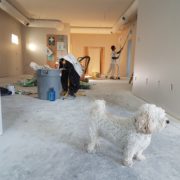A Beginners Guide to Rental Property Depreciation: All you should know!
In order to minimize your tax liability, claiming the depreciation on a rental property is imperative. It also significantly improves your cash flow. It is important to calculate precisely on the amount of depreciation tax deduction on rental property. While a little depreciation will enhance your tax liability, any excessive claim can cover you under the preview of ‘Fraud’.
Here is a comprehensive beginner’s guide to rental Property depreciation:
Depreciation – an Overview:
Depreciation technically refers to the decrease in the value of an asset over a period of time. Any tangible asset has a value which declines substantially over its useful life. The owner of the assets can deduct the cost of these tangible assets as an expense to claim the tax deduction.
Depreciation is a non-cash transaction which helps in improving the cash flows by the way of reducing the tax liability. Any rental property generates a certain amount of income which is liable to tax. By claiming the depreciation tax deduction on rental property, this liability can be reduced.
For investment property depreciation, there are two broad asset classifications:
- Plant & Equipment: Any item used in a building including dishwashers, light fittings, curtains, carpets etc. But the garden plants are not covered in this category.
- Building: The cost involved in the construction of the building for concrete or brickwork.
ATO Tax Depreciation Schedule – An Overview:
A Depreciation report needs to be maintained in order to claim a depreciation tax deduction on rental property. Tax depreciation reports state the entire claimable amount under depreciation to be considered for tax purposes. ATO only allows for a backdate depreciation of up to 2 years.
Hence, it is recommended to start claiming depreciation at the earliest possible time. It is worth noting that this 2-year limit can be contented by a savvy accountant and on the discretion of an ATO commissioner.
To include the rental depreciation:
- Rental money must be included under the income.
- Any insurance payout on the rental property must also be included under the rental income
- Any booking or letting fee should also be considered as rental income.
- Any reimbursement received for deductible expenditure to be included under the rental income.
- In the case of co-tenants, depreciation can be claimed only to the extent of legal interest in the property.
Things to Know About Depreciation Tax Deduction on Rental Property:
In order to claim a correct depreciation tax deduction, you must know the following details:
Date of the Beginning of Construction:
When the construction of the property begins, the depreciation rate percentages can be counted from the effect. If the property is constructed in different time frames, the depreciation can be claimed according to different times.
The percentage of depreciation approves the time for which depreciation can be claimed. Say, if you are claiming a depreciation of 5%, you can claim it for the subsequent 20 years. Similarly, if you claim depreciation for 4%, you can claim it for 25 years.
Date of the End of Construction:
The depreciation tax deduction on rental property can be claimed after considering the date of the end of depreciation. This is a very important date to be known and considered for the depreciation deduction.
Cost of Construction Involved:
The actual cost of construction exclusive of the cost of property purchased as well as the value of the property is considered as the cost of construction liable for a rental property tax deduction. It can also be estimated, in case the owner is not sure about such cost. Such estimation can be done on the basis of the type of construction say residential house or apartment or any commercial property as well as the party involved in such construction i.e. owner, builder or any developer.
With this beginners guide to rental property depreciation, you can suitably save a considerable amount on your tax liability.












